From beautiful shrines set in perfectly landscaped parks to quirky maid cafes surrounded by arcades, Tokyo is one of the most diverse cities you’ll probably ever visit.
Tokyo seems to be one of those cities you could explore time and time again and find something new with each visit. I, for one, underestimated the sheer size of it. If, like me, you have just six days to explore the city, you need a plan of action. And I’m here to help you with it.
What is the best time of year to visit Tokyo?
Tokyo is beautiful year-round but there are some important things to note:
- If you want to visit to experience cherry blossom (sakura) season, then the best time to visit is spring (March to May).
- My favourite time of year to visit and one I would highly recommend is between September to November for cooler temperatures and vibrant autumn colours.
- June to August see high temperatures and the humidity can be very intense. I was here in September and the heat could be unbearable. I would avoid this time of year, although, if you’re planning on climbing Mt. Fuji, July and August are the only months you can do so.
- Winter is another good option (December to February). Though the weather gets cold, you can often witness clear skies and fewer crowds.
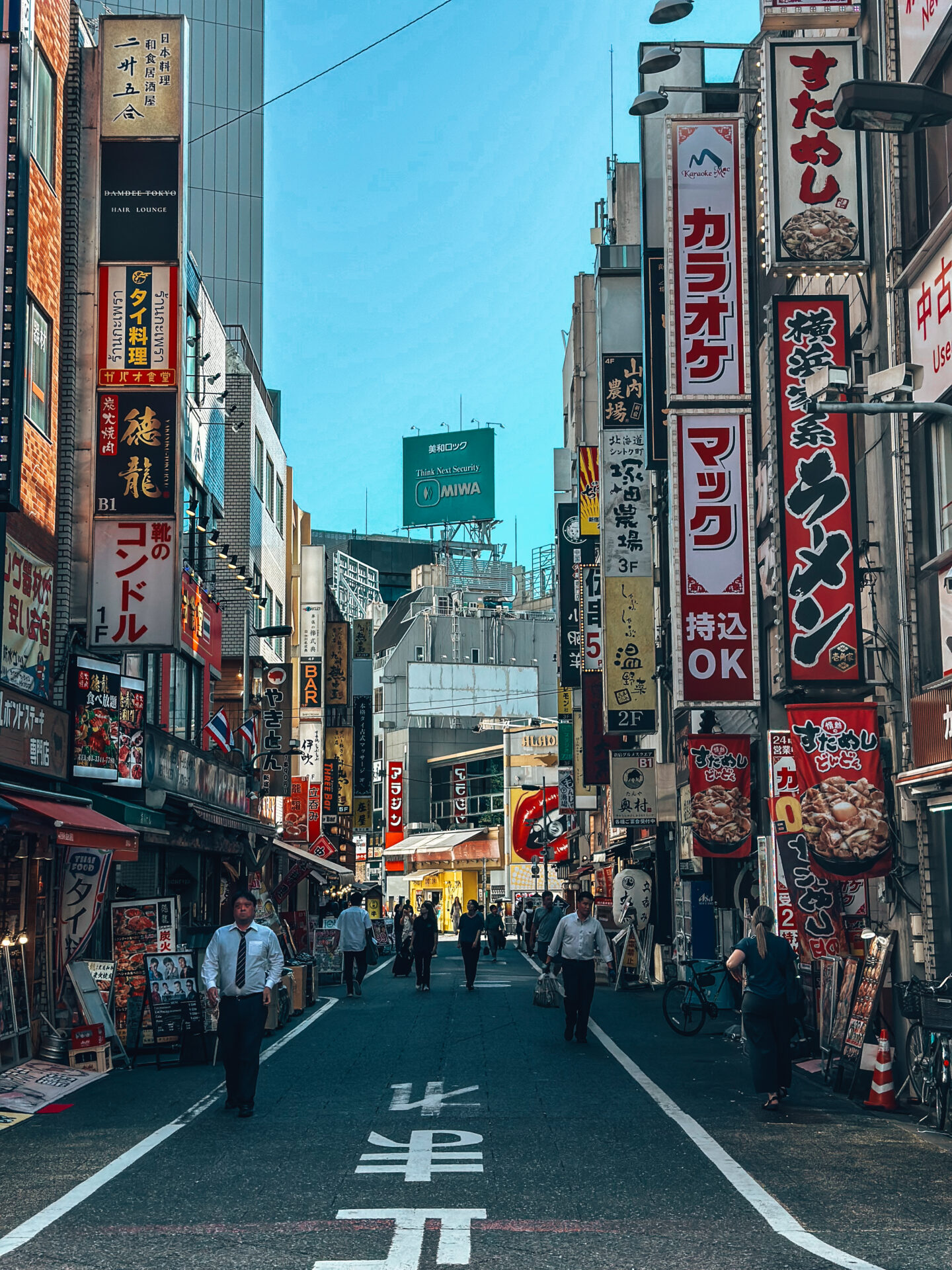
How do I get from the airport to central Tokyo?
Tokyo has two main airports: Narita and Haneda. From Narita, the easiest options are the Narita Express (N’EX) train, the Keisei Skyliner, or airport buses. When I left the baggage collection, the first thing I saw was tickets for the airport bus, so that was the one I chose. The bus cost me £19.50 (approx ¥3,800) and was in the heart of Shinjuku in just over an hour.
Haneda is closer to the city, and from here you can take the Tokyo Monorail, Keikyu Line, or buses. Taxis are available but I don’t recommend these because they can be quite expensive.
What is the best way to get around Tokyo?
Tokyo’s public transportation system is incredibly efficient and the Metro and buses are the best way to get around the city. Buying a Suica or Pasmo card is convenient for traveling on trains, buses, and even for small purchases at vending machines and convenience stores. If you have an iPhone, you can add Suica to your apple wallet and pay from your phone, which is super convenient. You just top it up and you’re ready to go. I highly recommend getting a local SIM card and using Google Maps to get around. It tells you exactly which platform to get on, as well as which carriage to embark for the fastest exit.
Things to know before visiting Tokyo
Choosing a central area that is well connected is key. Tokyo is a huge city, so being able to travel quickly between destinations is important. I recommend Shinjuku as the number one spot, followed by Shibuya or near Tokyo station. I stayed at The Knot Shinjuku – read my thoughts on it here, plus other Tokyo accommodation options here.
Get yourself a local SIM card as soon as possible. I used Ubigi, an easy eSIM option, but there are plenty of stores, especially around Shinjuku, you can pop into – just look out for the camera shops and ask someone to help you, as these shops are like labyrinths!
For famous tourist spots, book ahead! I recommend planning out an itinerary so you know which days you’ll be doing things so you can plan accordingly. Things you need to consider booking are Ghibli Museum, Ghibli Park, Shibuya Sky, Tokyo Disneyland and Disney Sea, teamLab Borderless.
Be prepared to queue for restaurants. In my experience, the ones with the queues are typically worth queuing for. That’s not to say you always need to queue! But just a heads up. Convenience stores like Lawson, 7-Eleven and FamilyMart are amazing for snacks and drinks – I was addicted to the fried chicken!
Japanese culture is quite unique and it’s important to be respectful of local etiquette while you’re in Tokyo. Conversations on trains are to be kept at a quiet volume and you queue to board the trains in a single line. Regarding tattoos, I visited in the summer and had my tattooed arms out and it was never a problem, however, many hot springs still follow the no tattoo rule. Some places may allow you to cover them with stickers but check before you visit.

Now for the fun. Here’s my Tokyo 6-day itinerary and some of the best things to do in Tokyo!
Day 1 – Harajuku and Shibuya
Brunch and shopping in Harajuku
Start your day with an early lunch at Menchirashi in Harajuku. They open at 11am – get there for opening, because there will be a queue. They serve an epic carbonara udon, a fantastic chicken paitan, and even fig tempura which makes a lovely sweet ending! It’s the perfect fuel for the day ahead and you can see the udon being made fresh!

After brunch, stroll around Harajuku, an area famed for its eclectic fashion, quirky shops, trendy cafes, and a youthful, energetic atmosphere. Takeshita Street is one of the most famous streets in Harajuku, lined with colourful boutiques, shops selling Lolita fashion with Victorian-inspired dresses to Kawaii (cute) styles. It’s super busy here though, so I’d recommend exploring some of the hidden side streets.
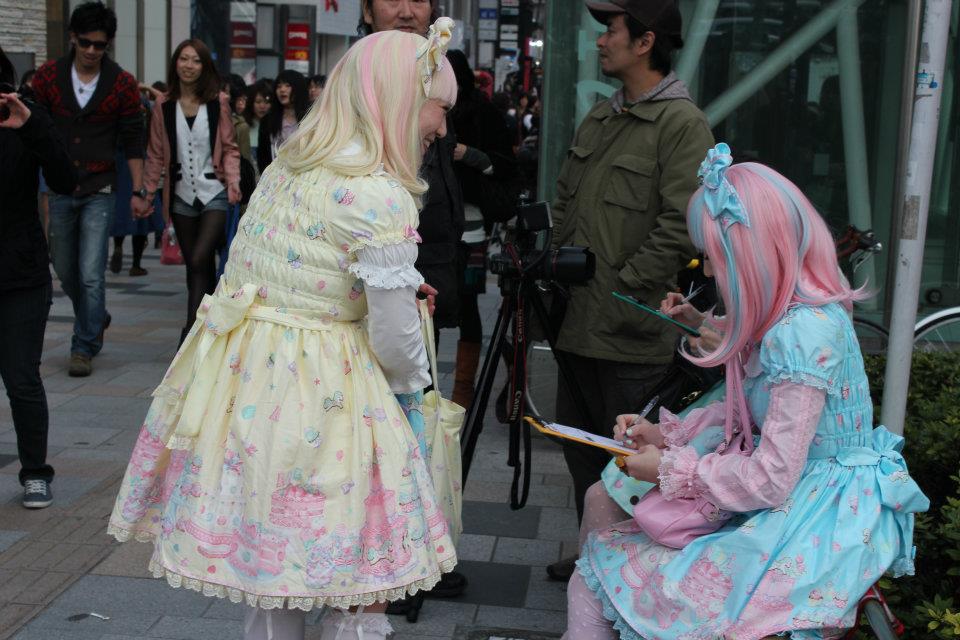
Harakjuku has a great thrift/vintage scene and makes for a great early afternoon of shopping. If you like cute toys and memorabilia, head to Kiddyland, with floors dedicated to Sanrio, Miffy, Studio Ghibli and more. Stop for a drink at The Matcha Tokyo, offering a selection of refreshing drinks like frozen matcha lemonade or matcha float with matcha soft serve. If you’re feeling peckish, head to Harajuku Gyozaro for a simple and quick snack of garlic and chive fried gyoza. Their tofu with sesame paste is also great!
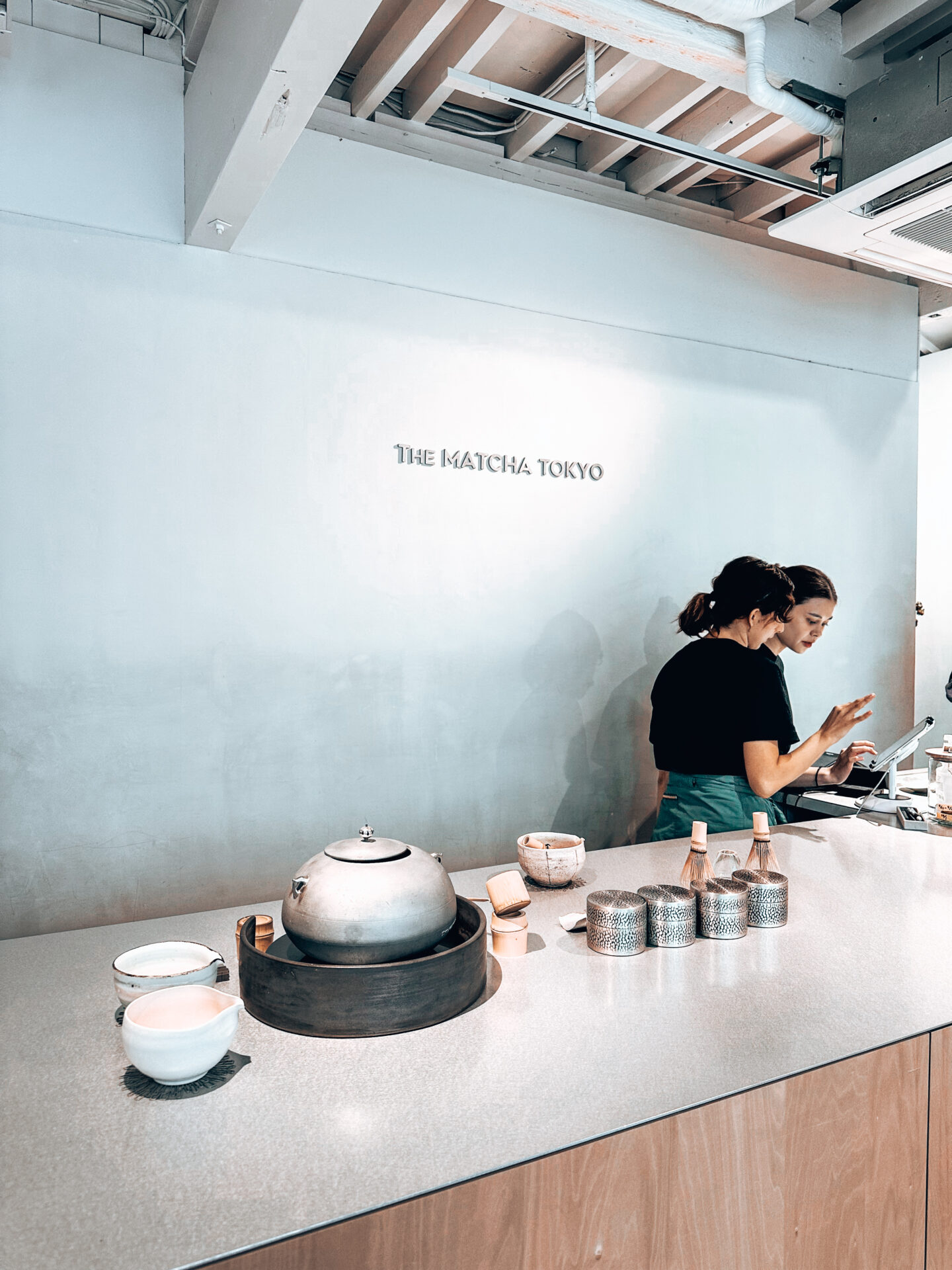
Yoyogi Park and Meiji Jingu Gyoen
Yoyogi Park is beautiful and a wonderful place to escape the hustle and bustle of Tokyo’s streets. Find your inner zen at the Meiji Shrine and soak in traditional Japanese culture.
Sunset in Shibuya
Head towards Shibuya and check out the iconic Shibuya scramble crossing. You can get a good view of it at MAGNET by Shibuya 109. Check out the Hachiko statue and learn about the touching story of the loyal shiba inu dog, Hachiko.
I would suggest timing your day so you can enjoy the sunset from Shibuya Sky, an observation deck at the top of the Shibuya Scramble Square building. The panoramic views from 230 meters above ground offer spectacular sights of Tokyo, and with those golden sunset hues… chefs kiss. Make sure to book tickets for the timeslot you want in advance. You can get your Shibuya Sky ticket on websites like Klook.
If you’re not done with shopping afterwards, you can head to Shibuya 109 or Center Gai or enjoy a drink at The Bellwood.
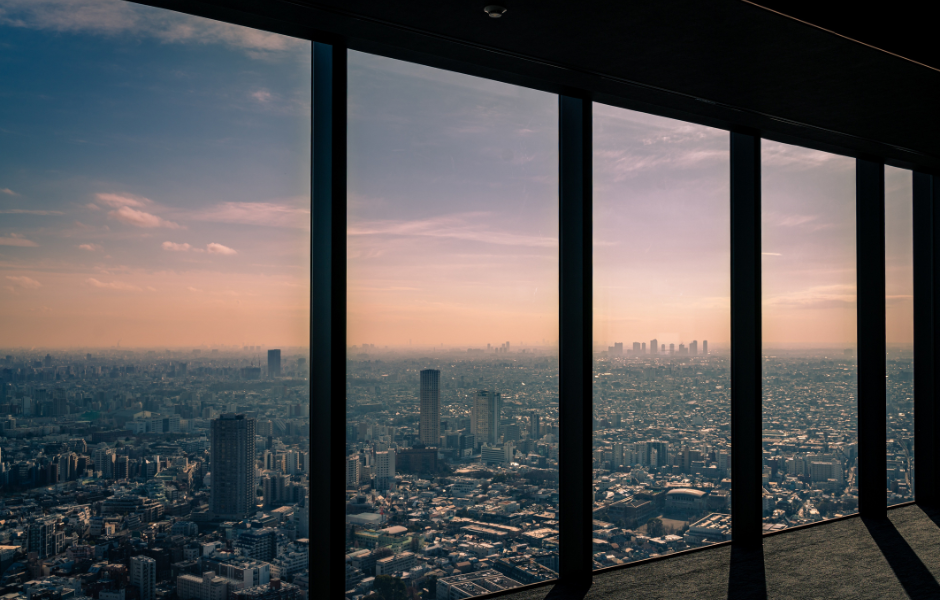
Day 2 – Asakusa
Start early to avoid huge crowds at Senso-Ji Temple. Located in Asakusa, Senso-ji is Tokyo’s oldest temple and has been rebuilt several times due to fires, earthquakes, and war damage but remains a symbol of resilience for the city.
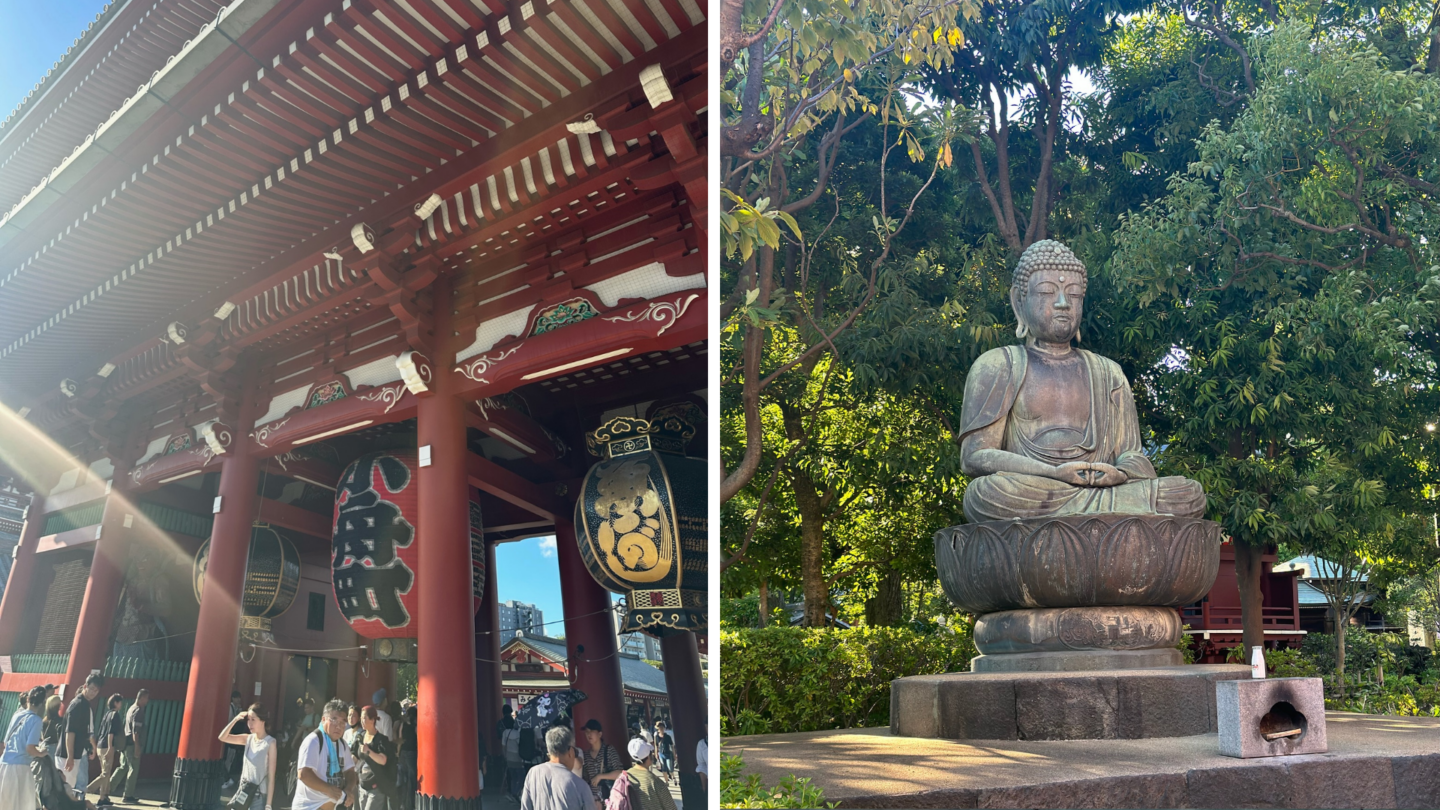
After passing through the main gate, take your time through Nakamise-dori, a vibrant shopping street that leads to the temple. This street is lined with stalls selling traditional Japanese snacks, souvenirs, crafts, and clothes. After you explore the shrine and grounds, take advantage of the street food in Asakusa, from the sweet potato brulee at Imo Pippi, curry pan at Tokyo Curry Pan, karaage from Asakusa Chicken, eel onigiri from Asakusa Unana. You can walk over to the park by the Sumida River, grab a few peach beers or soju from a 7-Eleven and just watch the world go by.
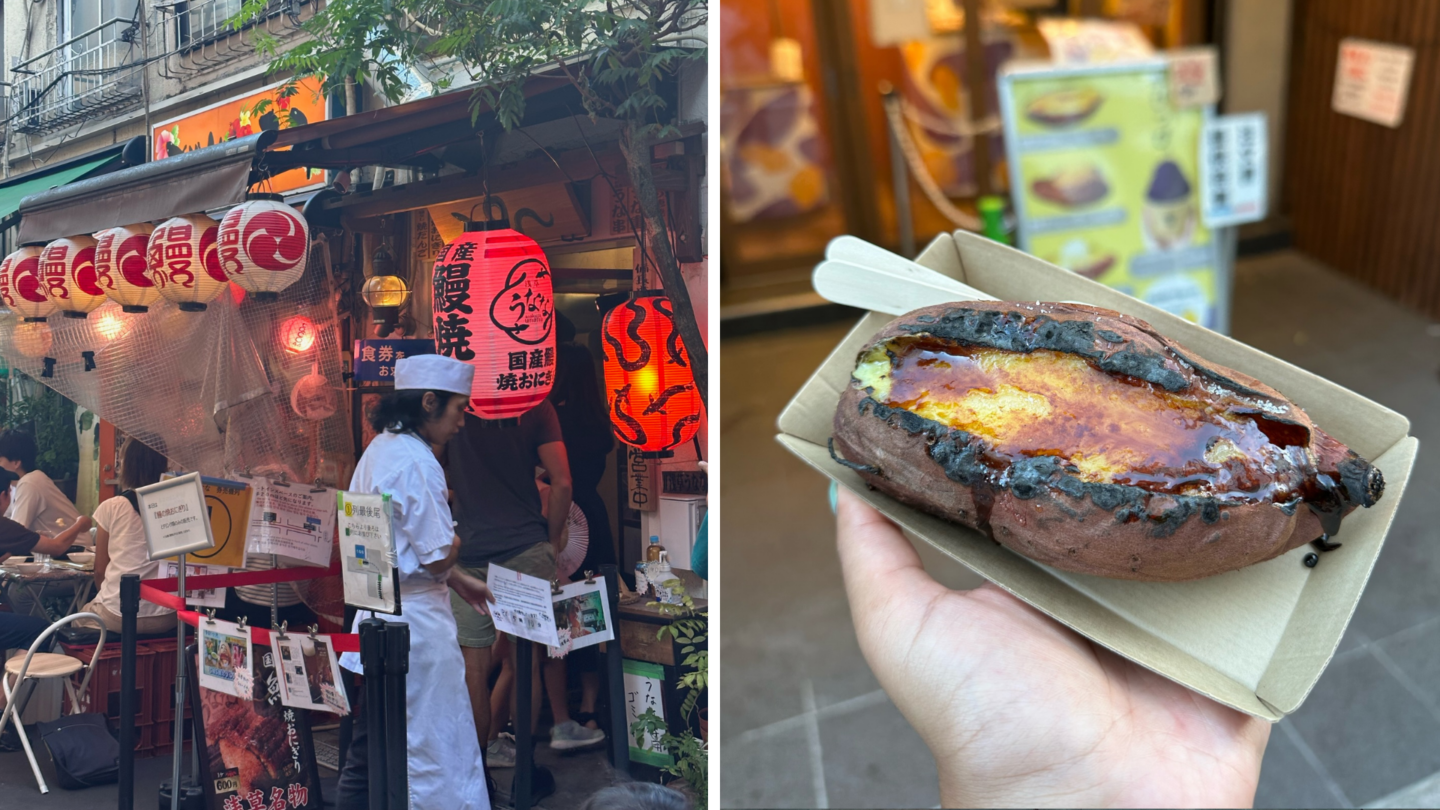
The next stop is one for the foodies. Take a sunset dinner cruise with Yakatabune Edomaekisen. One of the most magical things about a Yakatabune cruise is the way it offers a completely different perspective on Tokyo. The boat floats through the Sumida River, offering you a front-row view of some of the city’s most iconic landmarks – and the best part – all while enjoying unlimited teppanyaki dishes and drinks. Edomaekaisen serves grilled meat, okonomiyaki, yakisoba and more, as well as beer and highballs to wash it down. This is such a unique experience, a great way to see top landmarks whilst savouring delicious Japanese food!
Top tip: Travel via Tokyo station and explore the shops on the basement level. It’s a whole shopping arcade and Tokyo Character Street (on the basement level) features themed stores like a Ghibli store, Sanrio store, Snoopy Town, Miffy, Calbee crisps, the list goes on!
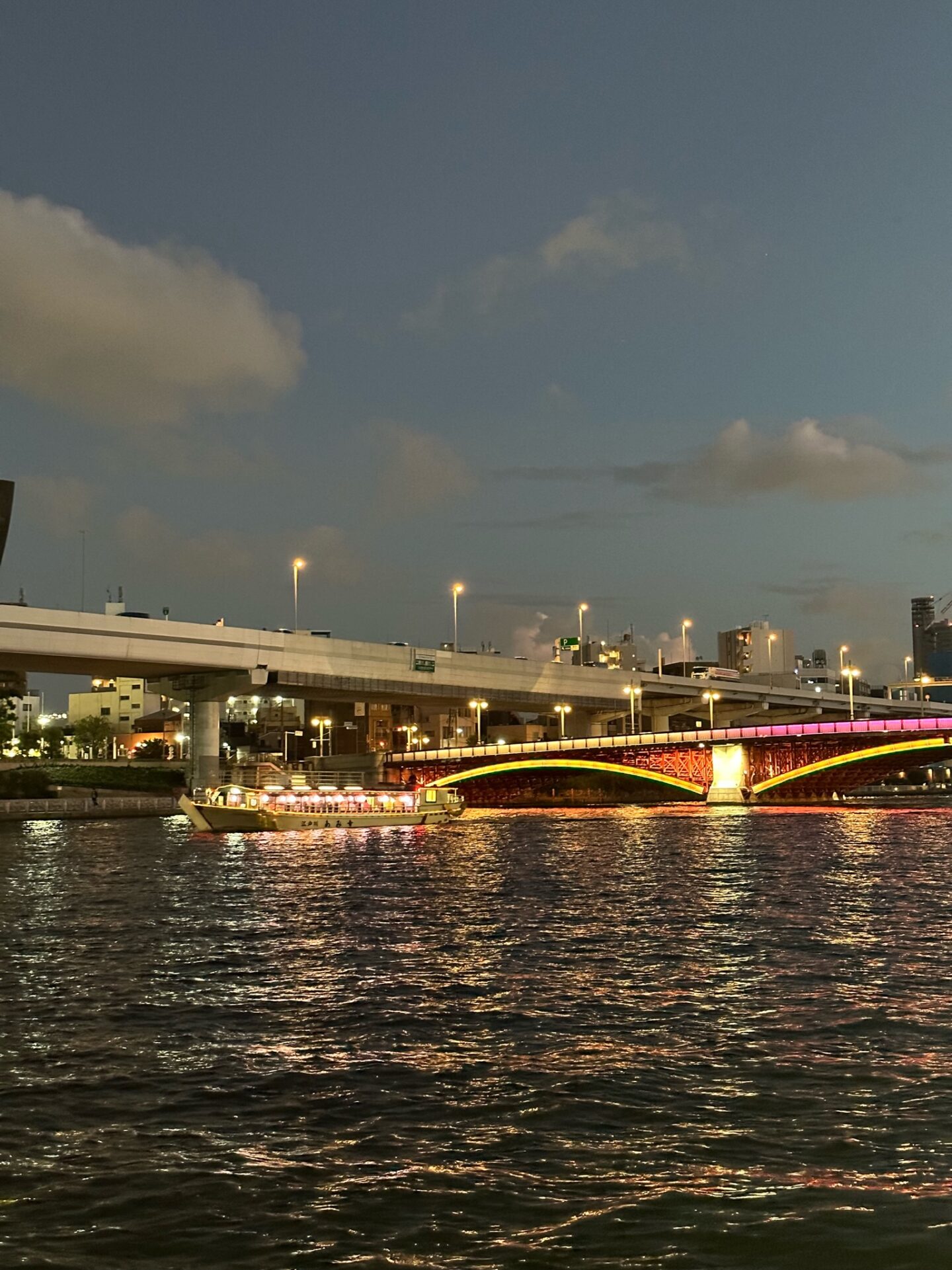
Day 3 – Tsukiji, Ginza and Akihabara
Fresh fish at Tsukiji Outer Market
Start your day at Tsukiji Outer Market. Once the largest and most famous wholesale seafood market, it now is a place offering numerous street food stalls, small seafood vendors and restaurants. The outer market offers a range of fresh seafood, from sashimi and sushi to grilled shellfish, eel, and crab. Outside of fresh seafood, you can also pick up Japanese kitchen knives, tea, and other culinary tools. Sample some of the incredible sushi and sashimi here but don’t fill up too much as I have a great lunch recommendation coming up.
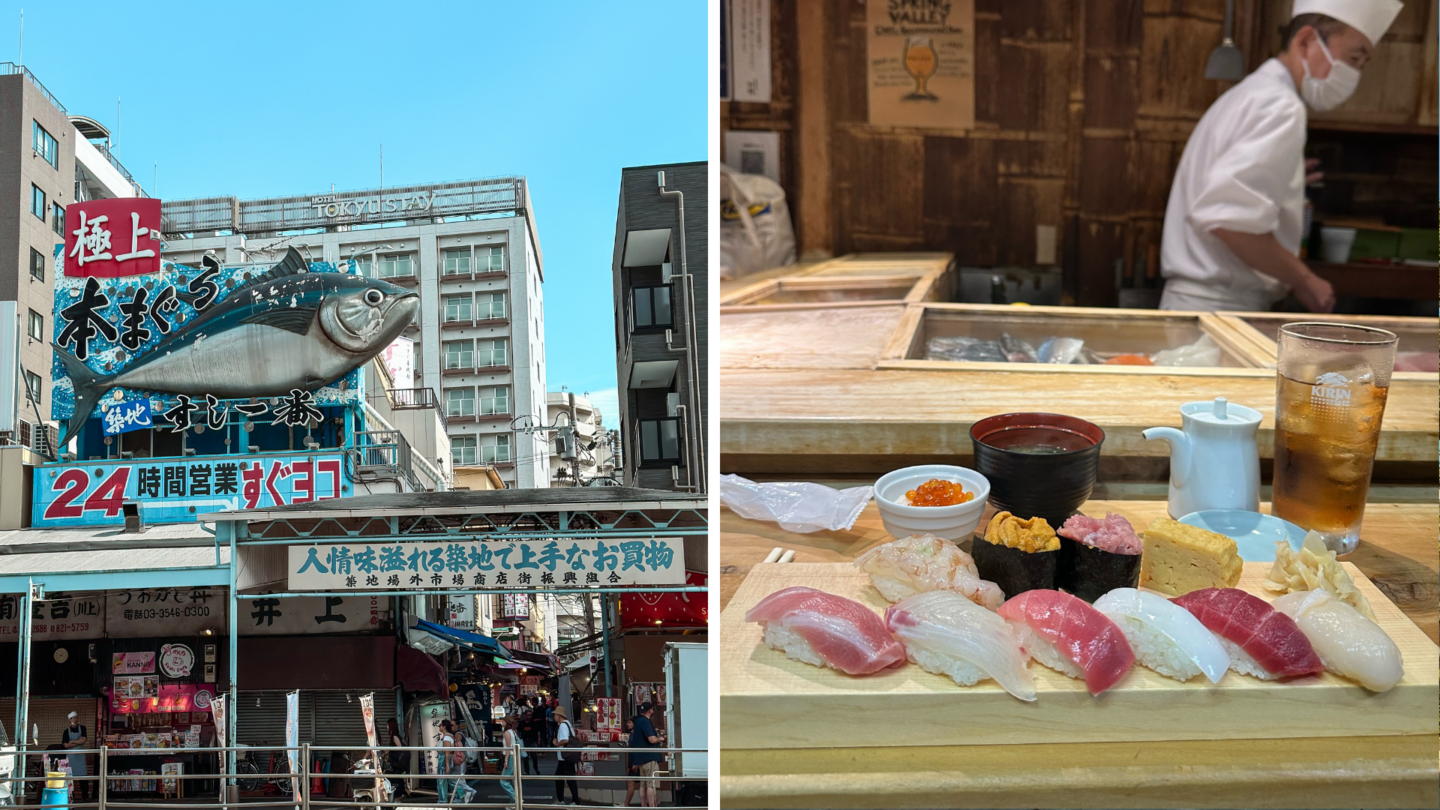
Ginza and the Imperial Palace
Our next stop is Ginza, known for its high-end boutiques, department stores, and art galleries, it offers an immersive experience in Tokyo’s sophisticated lifestyle.
Top tip: If you’re here on the 1st or 3rd Sunday of the month, have a stroll through Oedo Antique Market. This outdoor market is one of the largest and most famous antique markets in Japan making it a treasure trove of antiques, from vintage kimonos and handcrafted ceramics to traditional prints and samurai artefacts, where you can hunt for rare finds and souvenirs.
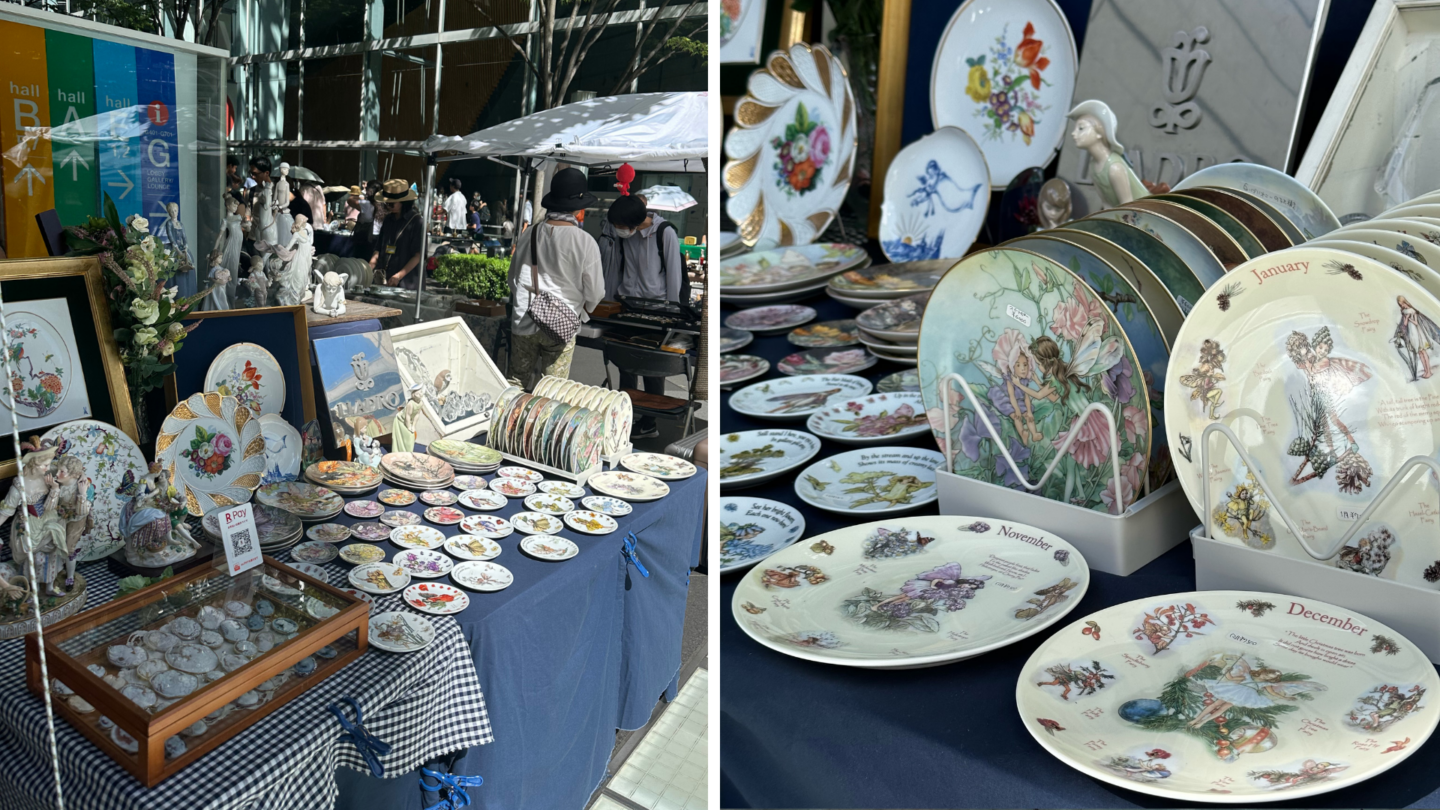
For lunch, head to Tsujihan. They specialise in bowls of rice topped with a mountain of fresh, raw tuna, prawns, salmon roe and more. And the best part is, it’s super affordable with bowls starting from ¥1,250 (approx. £6.50!!). You’ll also be served a small side dish of sea bream sashimi with sesame sauce and once you’re nearly done with your rice, they will top you up with more rice, plus a flavoursome dashi broth. It’s pure value for money with quality ingredients. Be warned though – we queued for about an hour for a seat! But it is worth the wait!
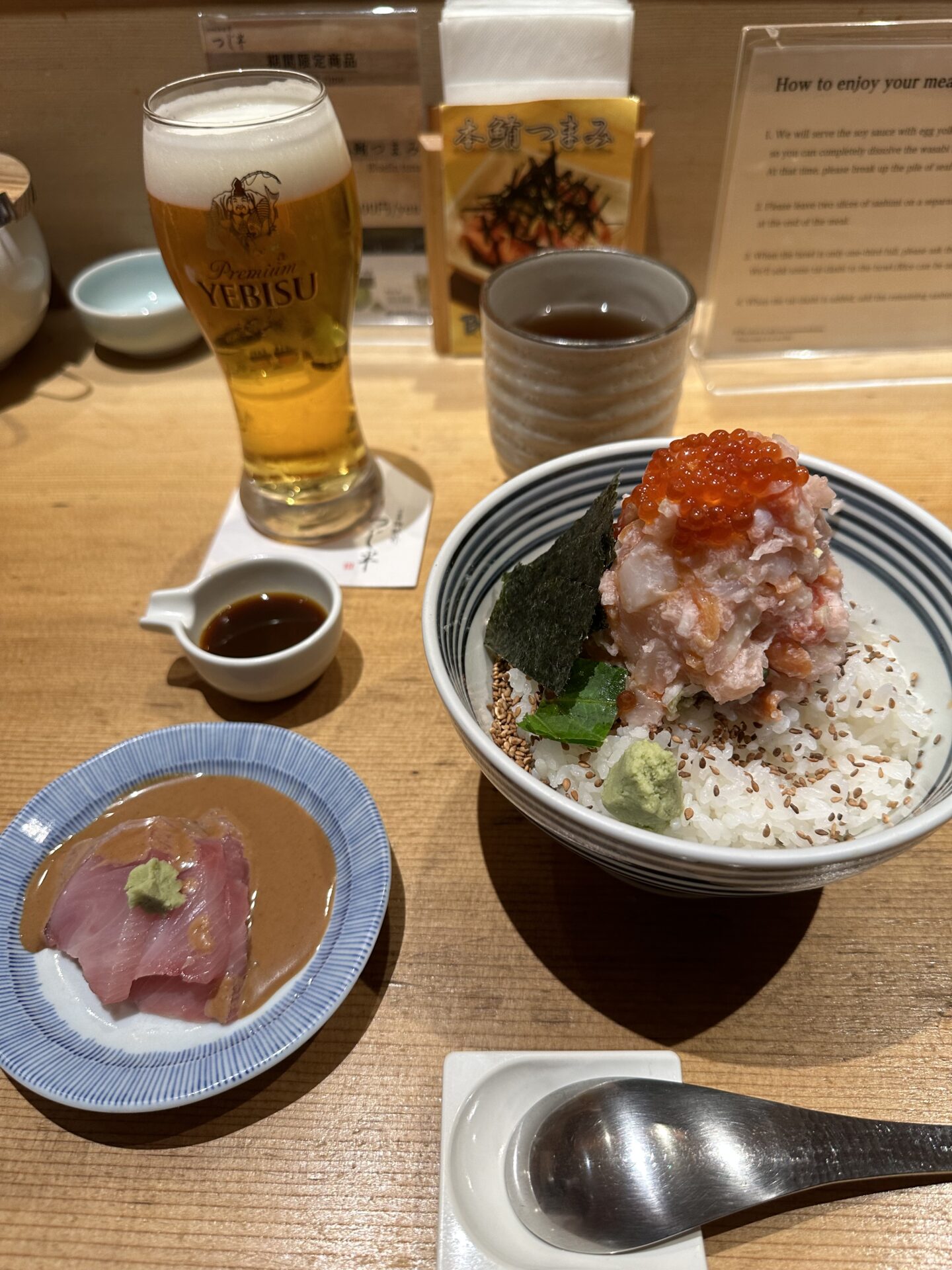
After lunch, head over to the Imperial Palace, surrounded by scenic gardens and impressive historic architecture. The palace grounds are home to the Emperor and Empress of Japan and are steeped in history. The picturesque moats and beautifully landscaped gardens make it a serene and peaceful retreat from the city.
Anime and Gaming in Akihabara
Known as ‘Electric Town’, Akihabara is the ultimate hub for anime, manga and gaming lovers! Towering buildings with neon signs line the streets, each one with floors and floors dedicated to collectable figurines, comic books, digital cameras and the latest gadgets. You’ll also find plenty of fun things to do, such as maid cafes, VR experiences, and the iconic arcade centres. Try your luck on the claw machines, have fun trying out the games, and enjoy people watching! I loved watching people on the dance machines – it was fascinating how fast they moved!
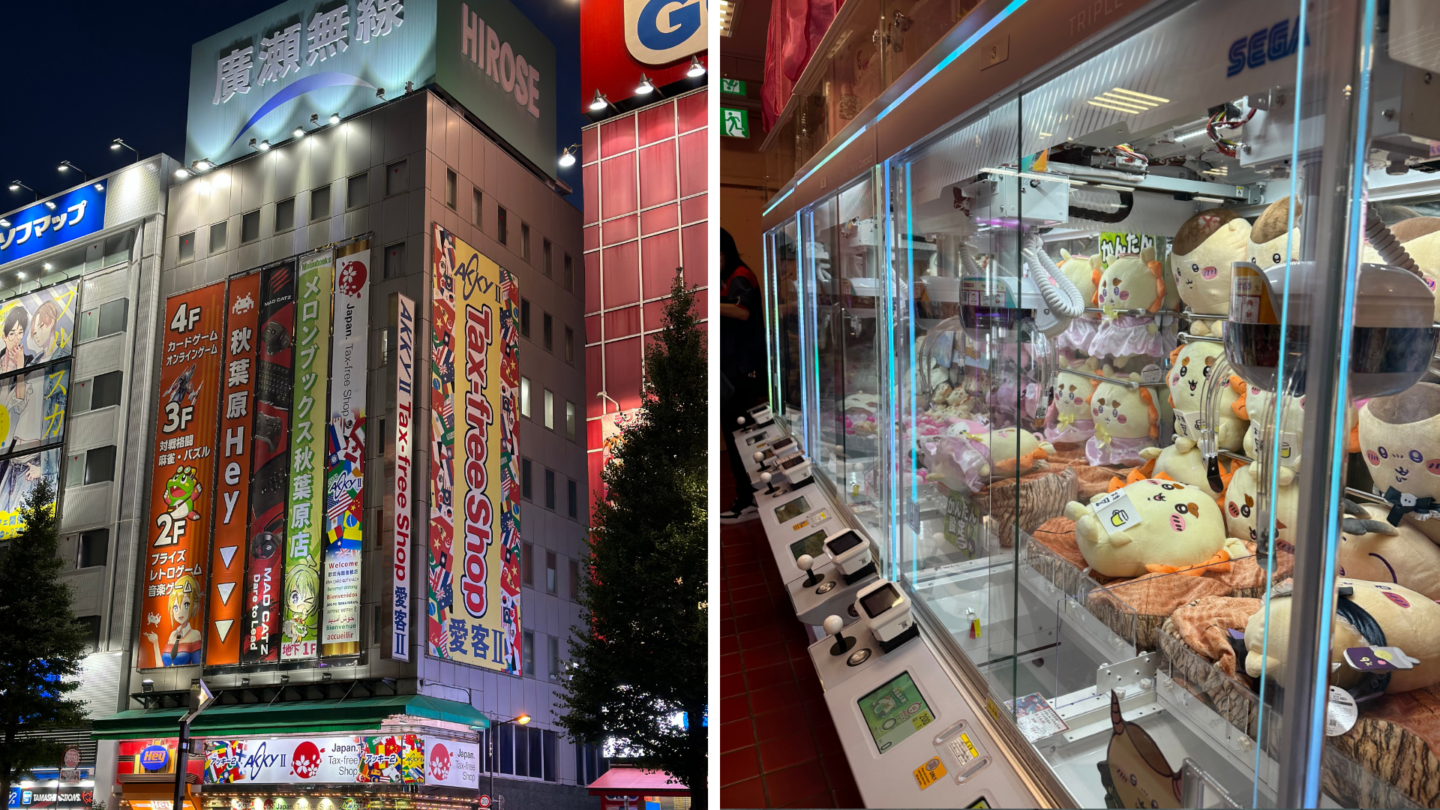
For dinner, head to Sagatani Akihabara. If you’re visiting in the summer, the cold soba is incredibly refreshing and delicious. And in the winter, their hot broths and tempura will hit the spot!
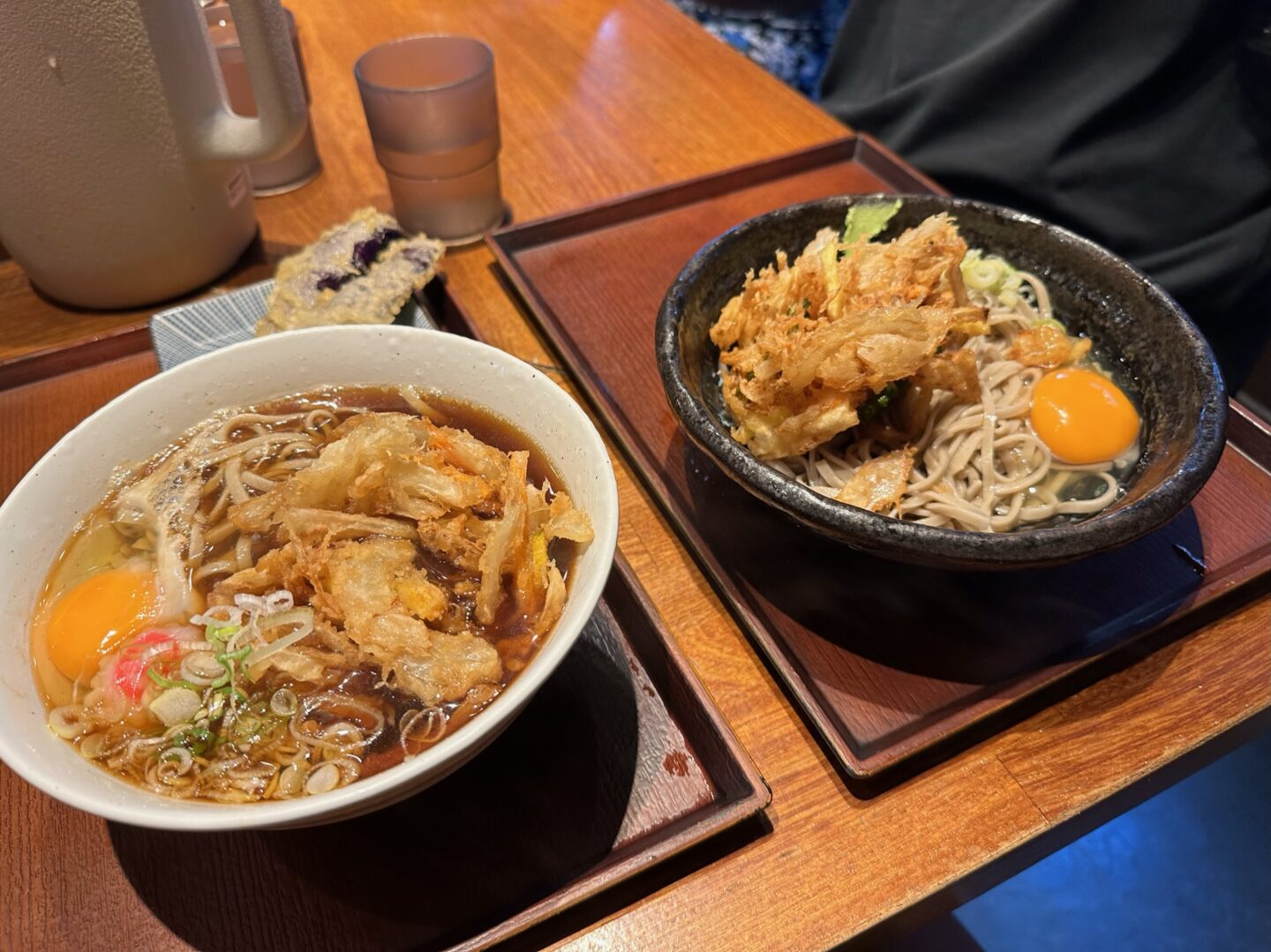
Day 4 – Ghibli Museum and Kichijoji
If you’re a Studio Ghibli fan like myself, The Ghibli Museum is a great place to explore whimsical exhibits that showcase the creative process behind films like My Neighbor Totoro and Spirited Away. Each room invites visitors to step into Ghibli’s storytelling, with hands-on displays, original sketches, and a cosy theater screening short films exclusive to the museum.
You may like some of these walking tours of the area:
Top tip: The Ghibli Museum in Mitaka, Tokyo, is not to be confused with Ghibli Park in Aichi, Nagoya. They offer a different experience, however, both require an advance purchase (tickets go on sale months in advance) so make sure to set your alarm!
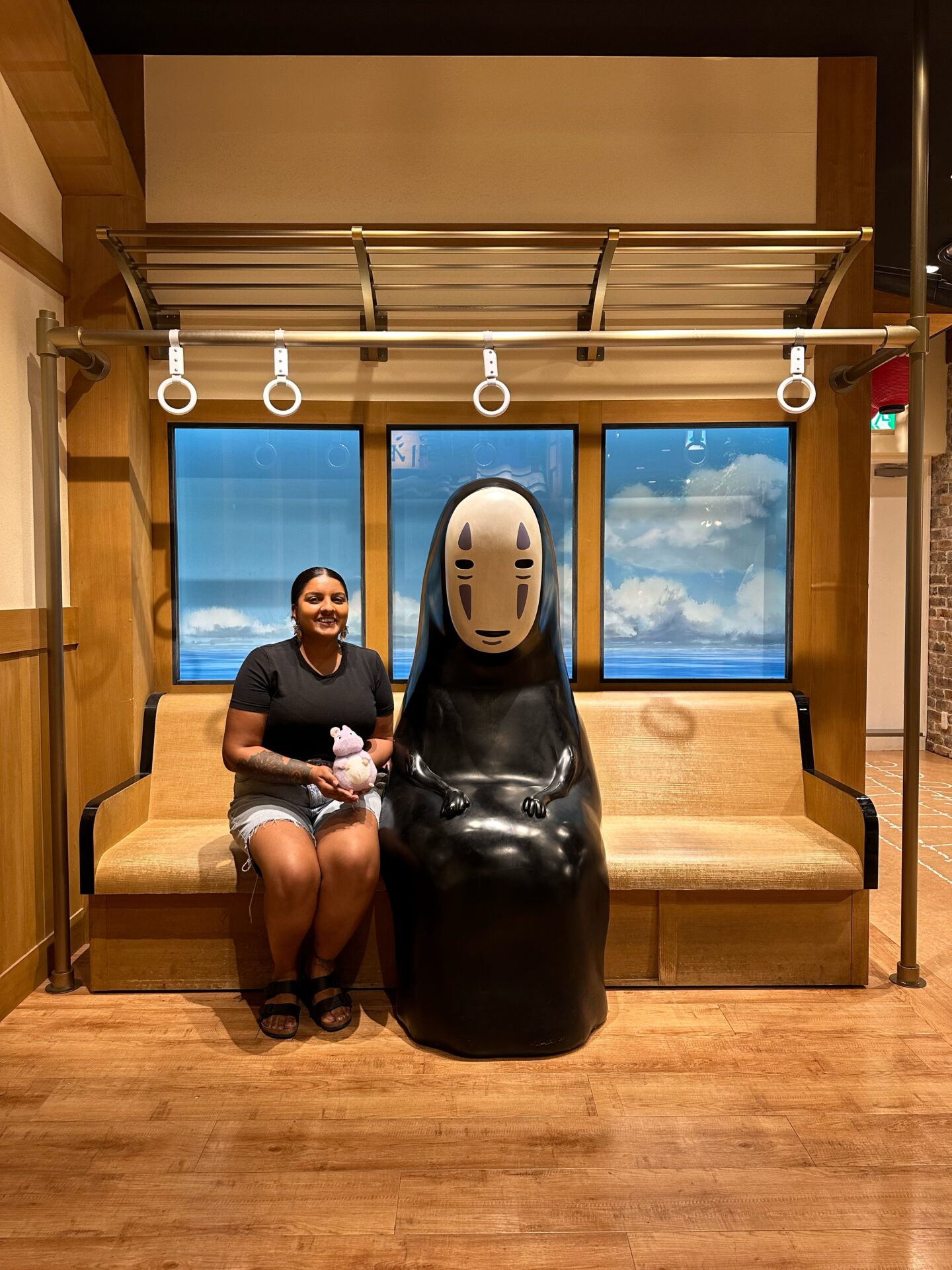
Nearby, Inokashira Park is not to be missed. The park has a large pond where you can rent swan-shaped boats, and also features a lovely shrine dedicated to Benzaiten, a goddess of fortune, which makes for a peaceful stroll. Surrounding the park, the town of Kichijoji is charming and lively, filled with thrift shops, artisan boutiques, and cosy cafes. I just loved it here! The area had a real laid-back vibe and a great place to spend an afternoon.
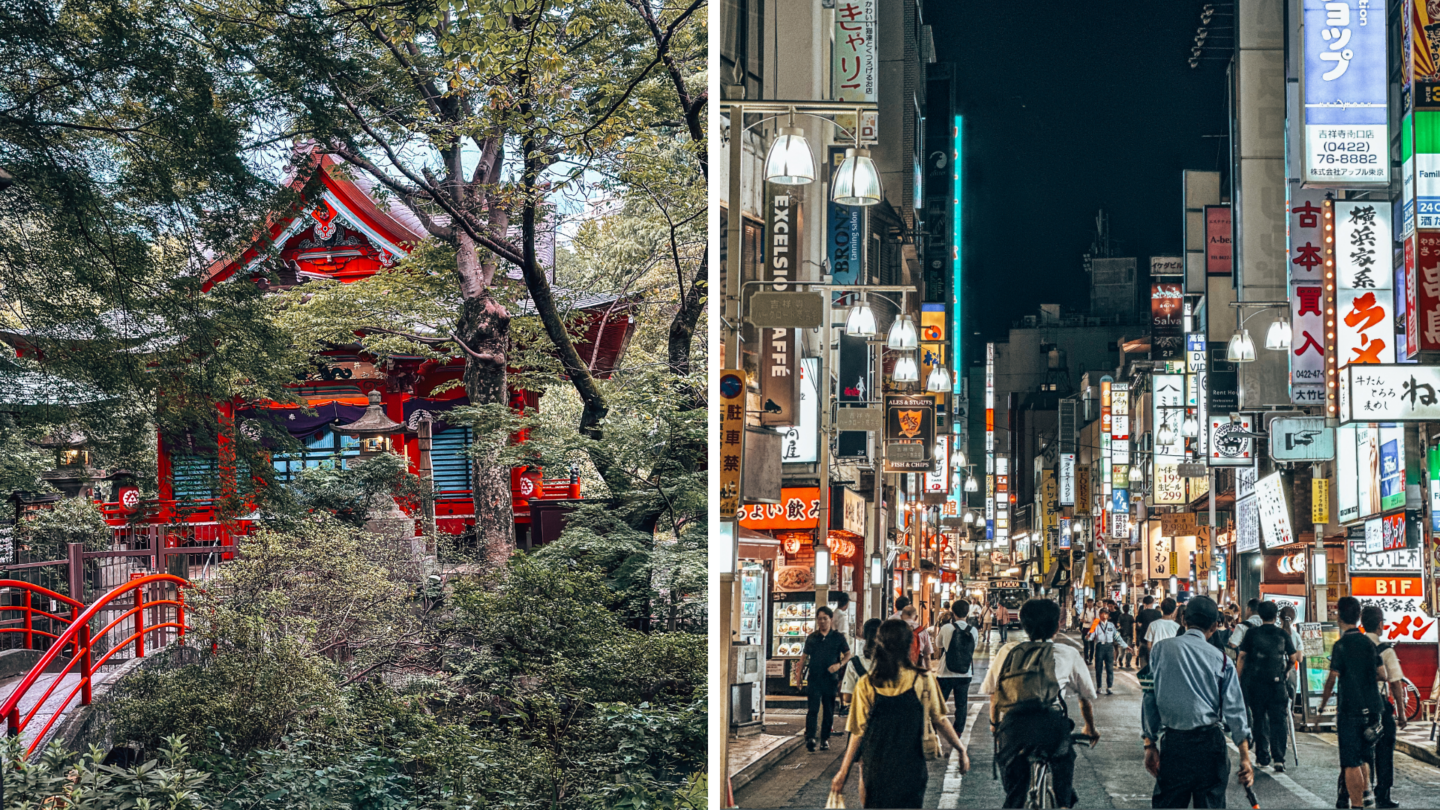
Day 5 – Hakone Day Trip
There are a few day trip options you can take out of Tokyo; from the ancient shrines and mountainous forests of Nikko; Kamakura’s coastal charm and Great Buddha; and the relaxing hot springs and views of Mt. Fuji from Hakone.
Each one offers a unique experience, but I decided on Hakone, hopeful for a peek at Mt. Fuji. Spoiler alert: I didn’t see Fuji. But our day out in Hakone was amazing nonetheless. First things first, we purchased the Hakone Freepass on Klook. This meant we could get the train from Shinjuku to Hakone, all of our transport in Hakone including buses, trains and the cable car, and access to certain sites in Hakone with our one pass. It cost us approximately £31 and I think it was so useful to have.
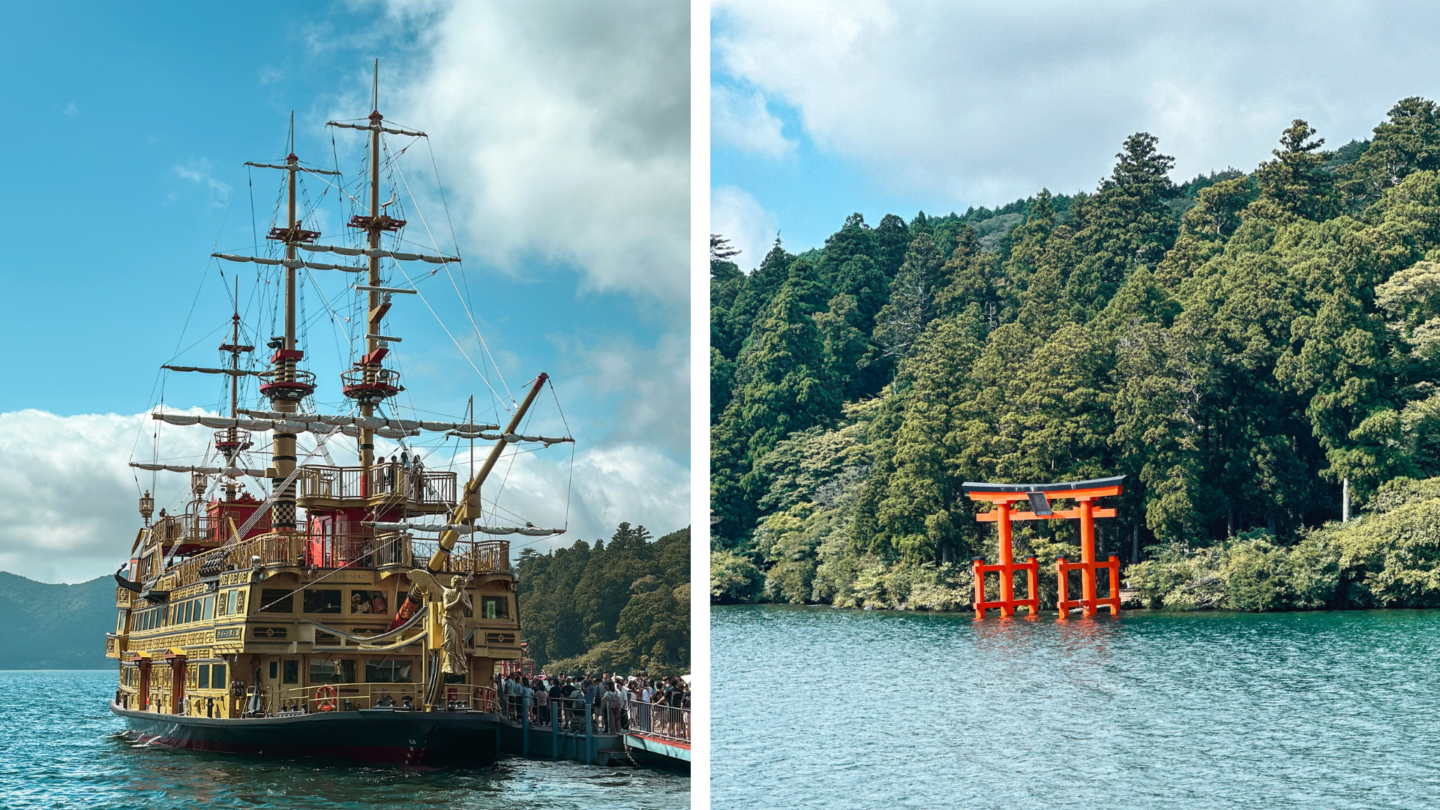
Start your day at Hakone Shrine and get the iconic snap before boarding the beautiful and opulent pirate ship that takes you across Lake Ashi. This was one of my favourite moments! We grabbed a beer on board and just enjoyed the stunning scenery!
Find a tour for your Hakone day trip:
You then disembark at Todengai, where you can take the Hakone Ropeway. Hop off at Obaku and head to the Hakone Green Plaza Hotel, where they offer day passes for their springs. Top tip: they don’t allow tattoos unless they can be easily covered up with stickers, which they do sell on site. Larger tattoos are an issue. After a dip in the hot springs, continue back up to Owakudani, also known as the ‘Great Boiling Valley’ and is famous for its active volcanic landscape, hot springs, and sulphur. A popular highlight are the black eggs (kuro-tamago), eggs hard-boiled in the hot spring waters that turn black from the sulphur. The dramatic volcanic scenery here is incredible!
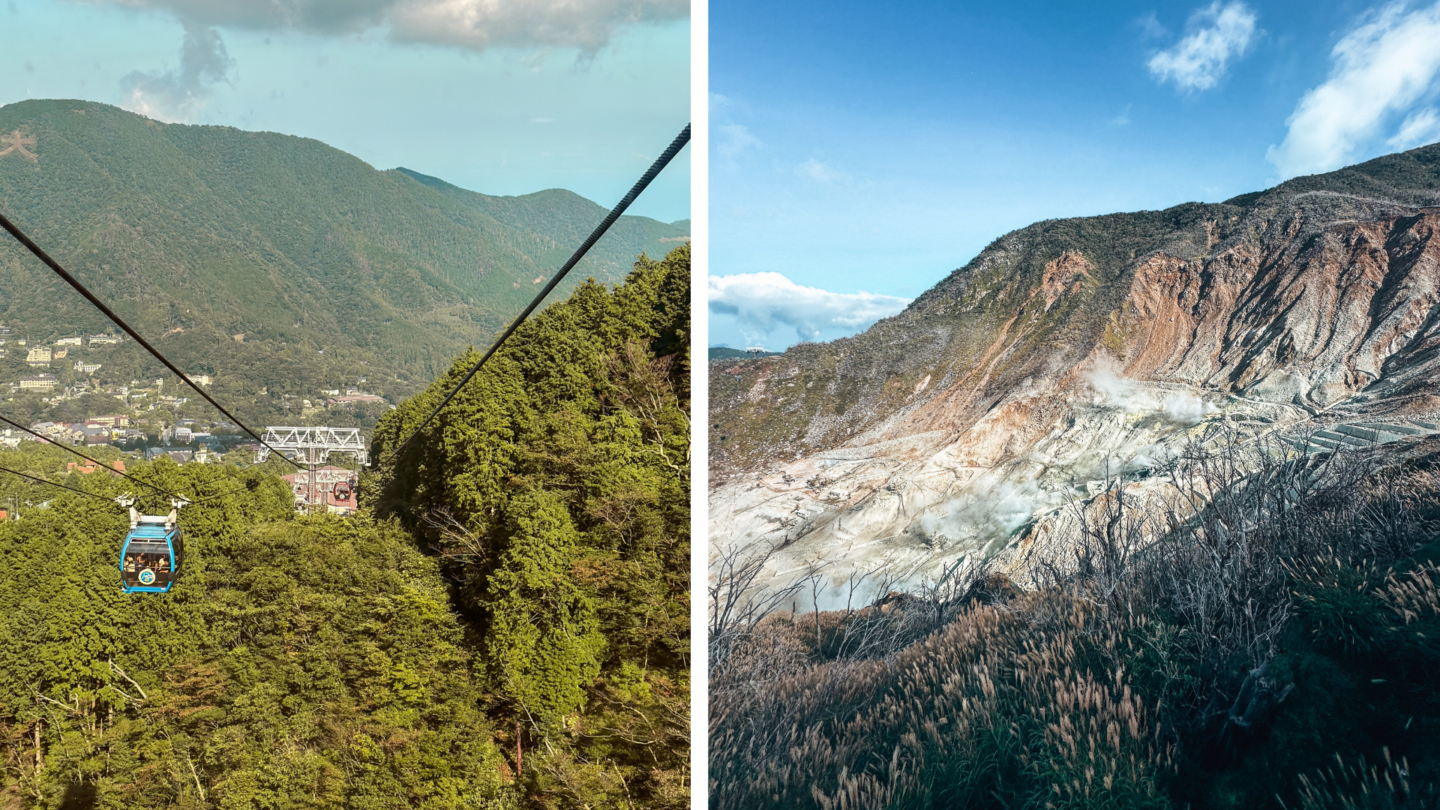
We then continued to Sounzan, where we caught the cable car to Gora. You can explore Hakone Gora Park, then from here, we took a bus to the Okada Art Museum. The museum has a discount for freepass holders.
For dinner, you have to visit Kaikatei, located just behind the Okada Art Museum, this udon restaurant is the cosiest little spot. You have to take your shoes off to enter, and the wooden interiors and beautiful greenery outside make it the most relaxing spot to end your day. The beef udon special is a must-try!
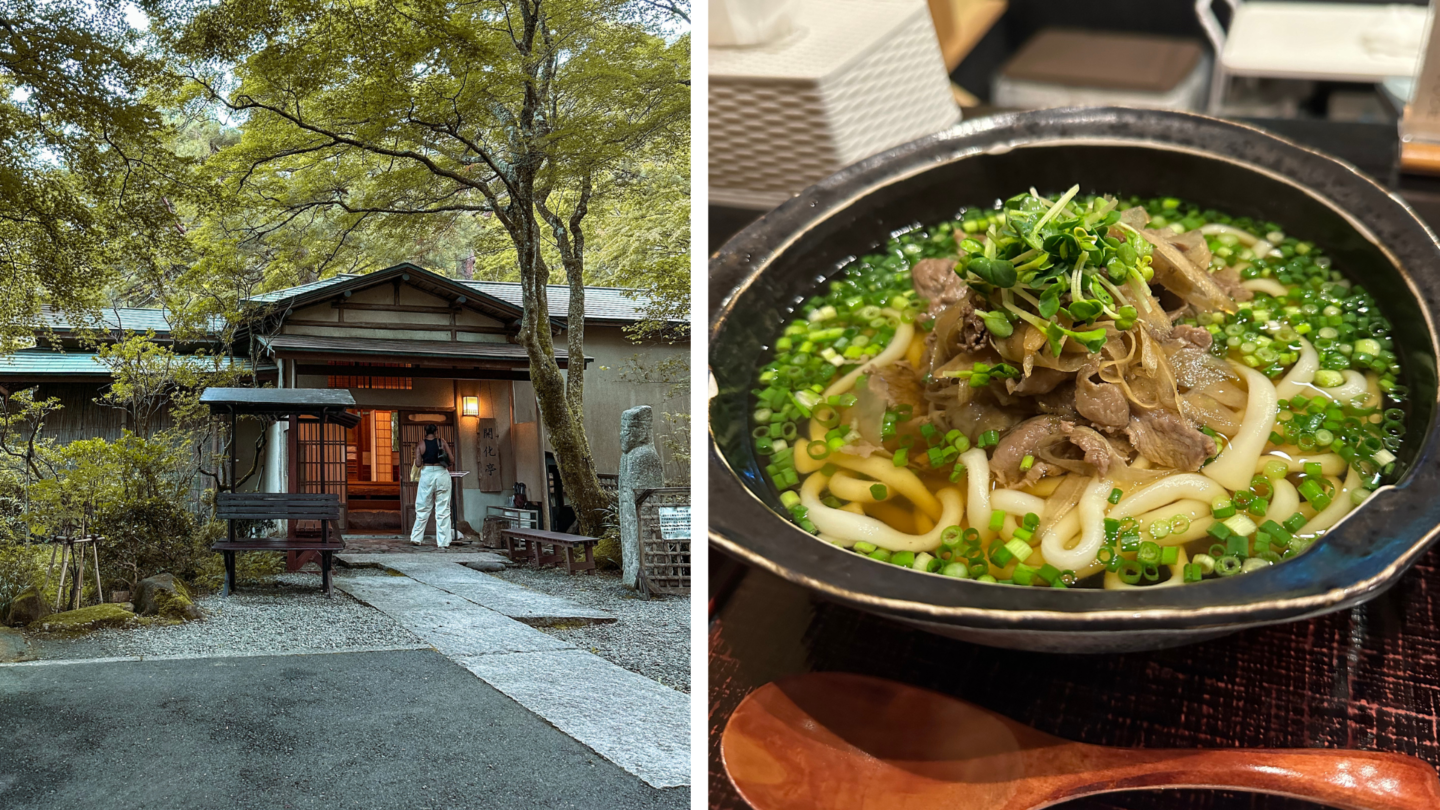
Day 6 – Shinjuku
Start your day with a visit to Gotokuji Temple, a charming and quirky spot famous for its sea of cat figurines, said to bring good fortune. It’s a bit out of the way of the city but easily reachable from Shinjuku, so, after a morning of soaking in the serene temple atmosphere, head back to the vibrant streets of Shinjuku. I’d recommend a stroll through Shinjuku Gyoen National Garden, an oasis in the heart of the city, before soaking up Tokyo’s atmosphere on your last day.
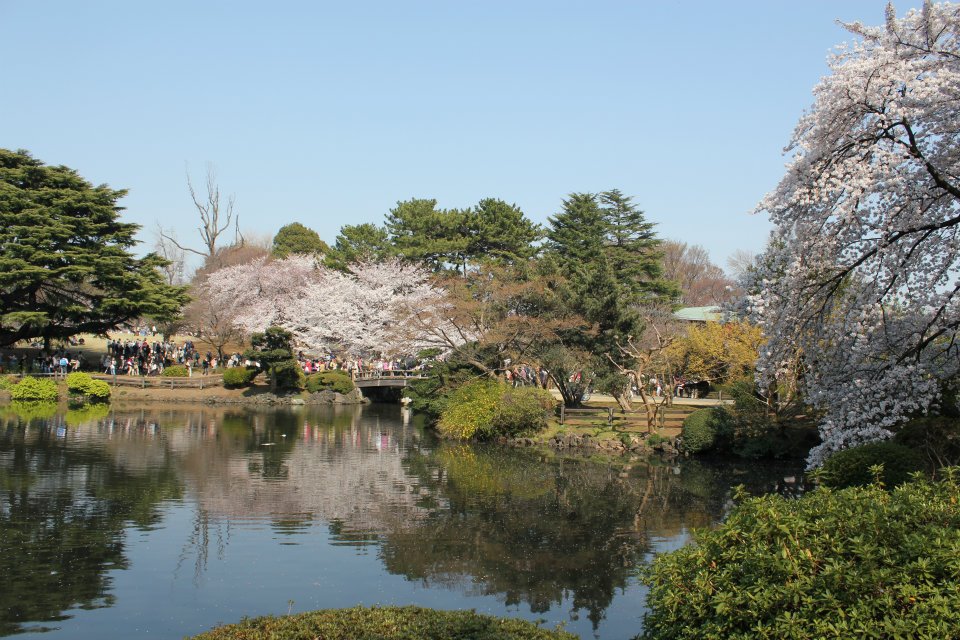
Shinjuku is a great area for shopping, with unique boutiques and thrift stores. You can hit up some of the game arcades here, or visit a sake bar. Stroll through Omoide Yokocho, a charming and cosy alleyway full of ‘izakaya’s’, a casual Japanese pub serving yakitori. Personally, it was cool to see Omoide Yokocho, but I found the atmosphere of sitting in one of them a bit too cramped for my liking and instead we ate at a place called Gyukatsu Motomura. They specialise in katsu beef cutlets, which are served rare alongside a mini hot stone for you to cook the steak further at your table and crisp up the katsu. Rice, salad, miso soup, and mochi were also included for £10.
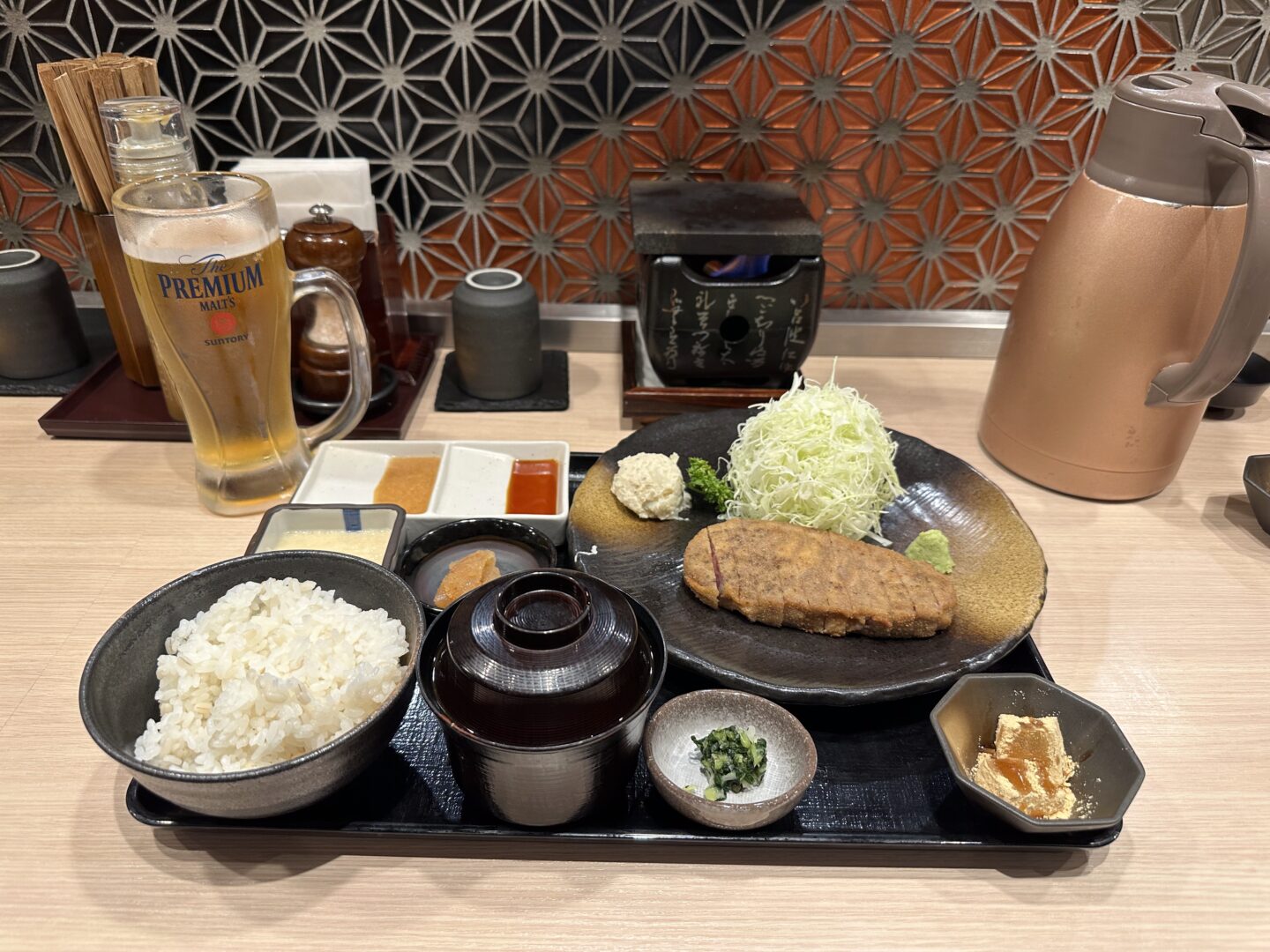
Bonus add on:
Day 7 – Disneyland and Disney Sea
If you have an extra day, Tokyo Disneyland or DisneySea from Tokyo is a fantastic day trip. Just a short train ride from central Tokyo, both parks offer a unique twist on classic Disney experiences, with Disneyland providing the nostalgic fairy-tale atmosphere and DisneySea featuring a stunning ocean-inspired theme. Have fun on rides, watch the iconic parades, and indulge in creative food options!
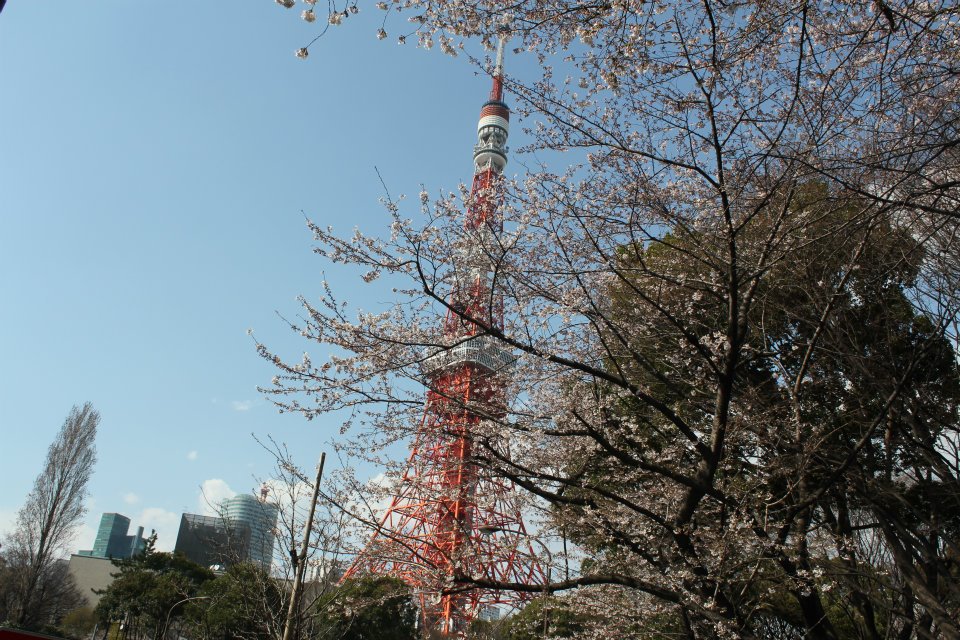
Final thoughts – Tokyo 6-day itinerary
Tokyo is an incredible city full of life. Each neighbourhood has its own charm, from the energetic streets of trendy Shibuya and towering arcades covered in neon lights in Akihabara to the polished, luxury streets of Ginza and idyllic parks dotted around the city. Whilst there aren’t a huge number of landmarks to see, Tokyo is all about the experience. Some of my best memories are at the end of the night, grabbing snacks from 7-Eleven and sitting in the park nattering away with my sisters.
However you choose to spend your time in Tokyo, immerse yourself in the unique culture, shop for quirky souvenirs and trinkets, and eat incredible food.
Let me know if this itinerary helped and if you have any questions, leave me a comment!